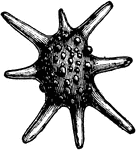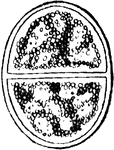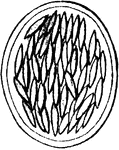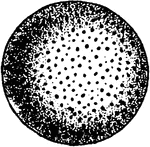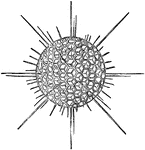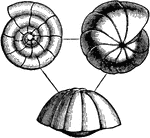Clipart tagged: ‘protozoa’
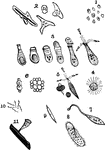
Forms of the animalcules, magnified
"Fig. 1, Monads; 2, Forms assumed by the Ameoba; 3, Flask Animalcules, Enchelis; 4, Actinophrys sol;…

Ciliate
"Enchylis pupa. The typical genus of the family Encheliyidae, with simply ciliate terminal mouth, as…

Formation of Cyclospora Cayetanensis Egg-cell
An illustration of the formation of the Cyclospora Cayetanensis egg-cell.
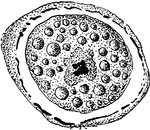
Formation of Cyclospora Cayetanensis Egg-cell
An illustration of the formation of the Cyclospora Cayetanensis egg-cell.
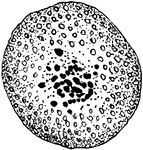
Formation of Cyclospora Cayetanensis Egg-cell
An illustration of the formation of the Cyclospora Cayetanensis egg-cell.

Formation of Cyclospora Cayetanensis Spermatozooids
An illustration of the formation of the CCyclospora Cayetanensis spermatozooids
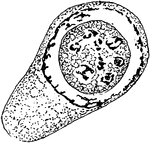
Growth of Cyclospora Cayetanensis Spore in Nucleus
An illustration of the growth of a Cyclospora Cayetanensis Spore in the nucleus.
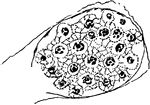
Formation of Cyclospora Cayetanensis Spores
An illustration of the growth of spores of a Cyclospora Cayetanensis.
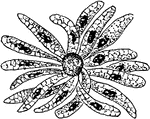
Formation of Cyclospora Cayetanensis Spores
An illustration of the growth of spores of a Cyclospora Cayetanensis.
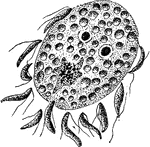
Fertilization of Cyclospora Cayetanensis
An illustration of the fertilization of the egg by the spermatozooids of a Cyclospora Cayetanensis.
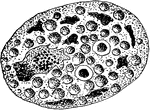
Fusion of Egg and Sperm-nuclei of Cyclospora Cayetanensis
An illustration of the fusion of egg and sperm-nuclei of a Cyclospora Cayetanensis.
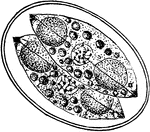
Formation of Capsules about the Two Sporoblasts
An illustration of the formation of capsules about two sporoblasts of Cyclospora Cayetanensis.

Gastrotricha
A small group of fairly uniform animals which live among Rotifers and Protozoa at the bottom of ponds…
Gregarina
Gregarina is a parasitic protozoan. They live in the alimentary canal of crayfish, and certain insects.
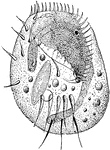
Infusoria
Infusoria is an obsolete collective term for minute aquatic creatures like ciliates, euglenoids, protozoa,…

Paramecia
Paramecia (Slipper Animalcule), also known as Lady Slippers, due to their appearance, are a group of…
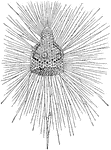
Radiolarian
A modern Radiolarian, showing the skeletal structure of silica and the extended fleshy threads or pseudopodia.

Living sponge, magnified
"A glace at a piece of common sponge will show that its surface is everywhere perforated with an infinite…
Vorticella
Vorticella is a protozoan. Except for when young, it is usually found attached to dead leaves or sticks…
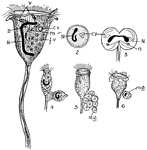
Vorticella
"Vorticella. 1. Structure. N., Macronucleus; n., micronucleus; c.v., contractile vacuole; m., mouth;…

Vorticella
"A, Vorticella, a stalked ciliate Infusorian; I, contracted; 2, extended. f, food "vacuoles"; g, gullet;…

Vorticella
"Vorticella. A, B, living specimens in different positions; C, optical section; D1, D2, diagrams illustrating…
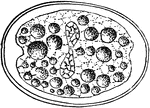
Division of Zygote
An illustration of the division of a zygote of Cyclospora Cayetanensis into two sporoblasts.
